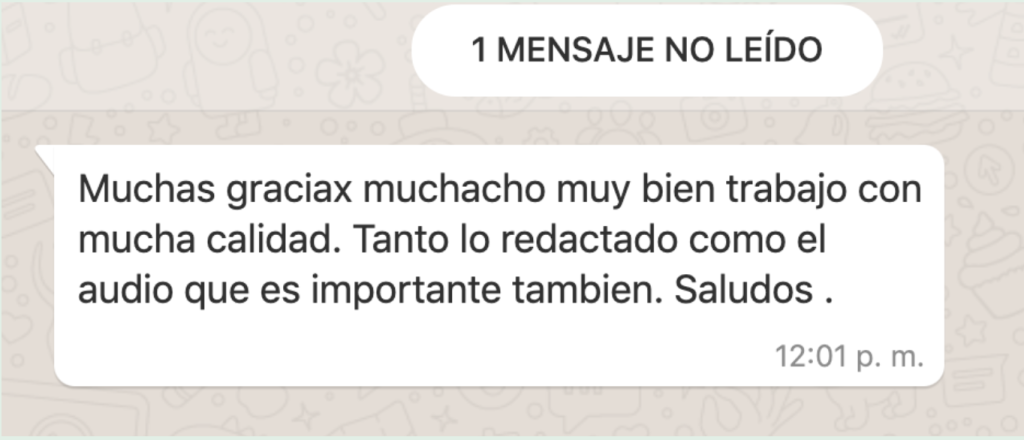
Utilizing the WhatsApp audio feature for news
One of the most popular features of WhatsApp is the ability to leave a short audio message in lieu of a text message, video or photo. It’s a feature that’s widely used across the world, but less so in the United States. And Radio remains popular across Latin America, especially in areas with limited internet access. Because of these two aspects, we decided to experiment with short audio clips as a means to relay the information we publish in our WhatsApp newsletter, Documented Semanal. We felt audio would be a familiar medium that would provide a lower amount of effort for our readers than our text newsletter.
Before producing our first audio version of Documented Semanal, we put out a call asking our readers for their help. Almost immediately, about 20 people offered to assist us. We wanted to have some data points on how our audience uses WhatsApp’s audio feature before proceeding and whether or not an audio version was something they were interested in having.

“It’s just like how when I was in Peru, I used to listen to the radio,” one reader said. “That’s how I would get my news every single day.” Another reader told us that she only uses WhatsApp’s audio feature because she’s a mother of three, including an infant. “You think I have an open hand to type?” she said. This sentiment was also reflected by other readers we spoke to.
We previously experimented with illustration, but we wanted to understand if there was a better medium to convey the often complex topics we discuss in Documented Semanal.
For example, New York state recently opened a $100 million coronavirus rent relief fund. The money serves to cover some of the financial burden many took on when they lost their jobs due to the coronavirus pandemic. We get questions from the public about where to find rent relief nearly daily. Up until the relief fund was created, there were piecemeal funds generated by concerned citizens and nonprofit organizations, but there was no direct relief from the state.

When we looked into the relief fund, we were baffled. We had to read the guidelines for the program multiple times to understand how the program works and how people could apply. Ariel Goodman, our audio production intern, and Nicolas Rios, our audience editor, felt it was a good subject for an audio explainer. They analyzed the program, wrote a script and recorded the audio together. Our audience loved the audio. “Thanks for this,” one reader wrote back to us. “It’s very well written, as well as the audio,” one reader said. Seventeen readers sent us messages just to say “thank you.”
As we proceed, we will continue tweaking the audio formula based on the information we include. We are interested in experimenting with audio callouts and perhaps doing Q&A’s over voice notes. Unfortunately, there are no metrics yet to measure whether or not the audio is being received well overall. We use a paid service to track how many people click the links we provided, but WhatsApp does not inform us how many people have played our messages compared to how many are reading the text.
We’ll have to figure out a system moving forward on how to evaluate the performance of our audio messages and/or hope that WhatsApp begins to provide easy to digest metrics.

Comments